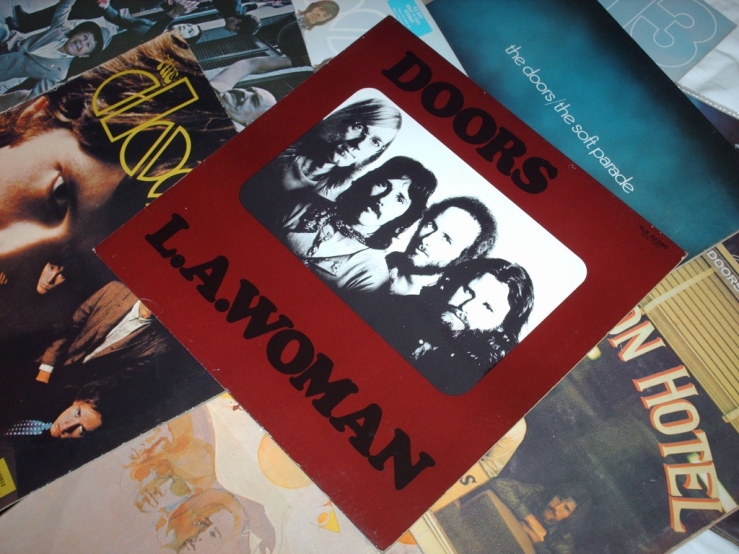 Paul A. Rothchild, producer of the first five Doors albums, said this of the L.A. Woman sessions, in James Riordan and Jerry Prochnicky’s book ‘Break On Through – The Life and Death of Jim Morrison’:
Paul A. Rothchild, producer of the first five Doors albums, said this of the L.A. Woman sessions, in James Riordan and Jerry Prochnicky’s book ‘Break On Through – The Life and Death of Jim Morrison’:
”…it was a joke. They’d come straggling in. Jim wouldn’t even show up half the time. There was no enthusiasm at all. They were drugged on their own boredom. Just totally bummed out. Ray would try to get things together. John was really angry about Jim’s attitude and Robby sort of laughed at it and said ‘That’s Jim!’…”
continues Rothchild in ‘Break On Through’:
”There was simply nothing there, no energy. We rehearsed and rehearsed, but it didn’t get any better. I figured I’d do it like the last few – patch together the best stuff. We went into the studio and it was dreadful. Jim got into his spoiled brat thing and dragged everything down deliberately. I worked my ass off for a week, but it was still just fucking awful. Hoping to make them angry enough to do something good, I’d just tell them ‘This isn’t rock’n’roll, it’s just cocktail lounge music!’ But they just didn’t have the heart anymore….”
Rothchild having departed, the band went on to produce the album with Bruce Botnick, Sound Engineer. Recalls Manzarek in ‘Break On Through’:
”Everyone looked at everyone else and said, ‘Hey, why don’t we record right here?’ Why don’t we just bring stuff across from Elektra records, fortunately right across La Cienega Boulevard. We just wheeled over a console and a tape machine. Bruce set up everything upstairs and ran cables down out the back door on the second floor, down to the first floor, put the mikes in, baffled the place off a little bit, and we recorded it virtually live. There is very little overdubbing on ‘LA Woman’…”
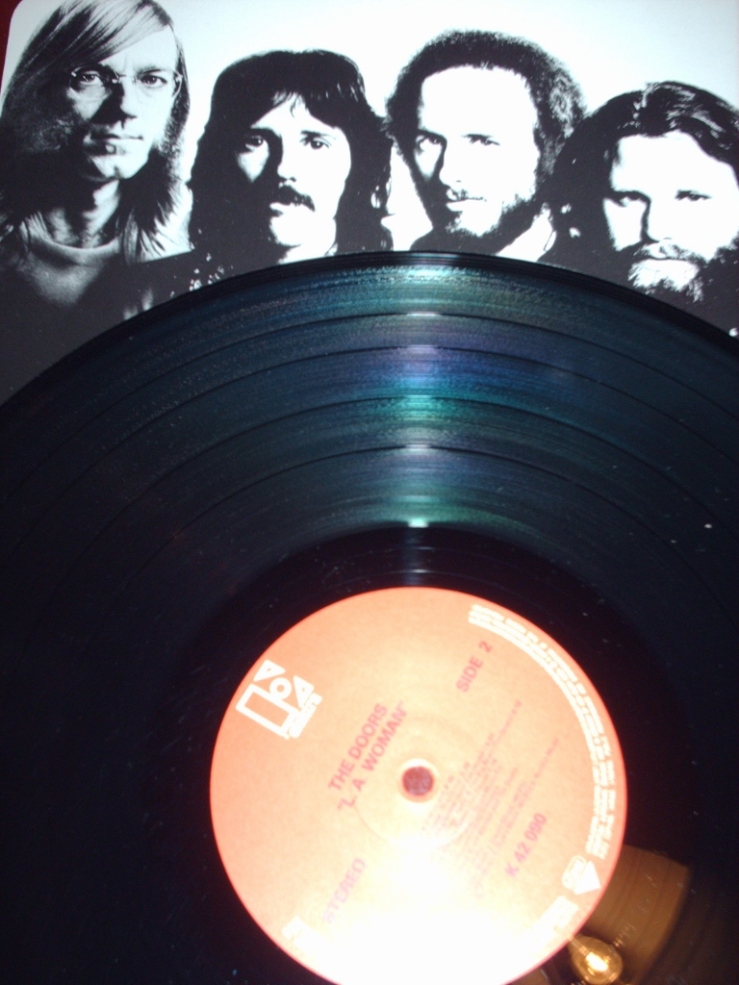
The Doors were Jim Morrison (vocals), Ray Manzarek (keyboards), Robbie Kreiger (guitar) and John Densmore (drums). Unusually, the band decided to use two session musicians on the album. Although Lonnie Mack had played bass on two tracks on ‘Morrison Hotel’, this was taken to a new level on ‘LA Woman’. Jerry Scheff, bass player with Elvis Presley during the 60s and 70s, played on all tracks, with Mark Benno contributing rhythm guitar on four tracks (‘Been Down So Long’, Cars Hiss By My Window’, ‘L.A. Woman’ and ‘Crawling King Snake’). Manzarek remembers in ‘Break On Through’:
”The idea occurred to us to use a rhythm guitarist on a couple of cuts to free up Robby so he wouldn’t have to overdub his solos…”
Employing a bass player rather than Ray Manzarek playing the bass parts on his organ, as previous records, gave the record a different sound, more gutsy and bluesy, with plenty bottom end.
In ‘Break On Through’, John Densmore is effusive about working with Bruce Botnick, and the new direction that the music was heading in:
”When we finally said goodbye to Rothchild, it was so refreshing, doing ‘L.A. Woman’. Sometimes it would have taken half a day, previously, to go around each drum getting a sound, which is fine if you’re making ‘Sgt Pepper’ or whatever. But, with Bruce Botnick as co-producer, I started playing my drums and he said ‘That’s great, that’s great,’ and in half an hour it was together. And I thought, ‘Shit, this is the sound I’ve always loved.’ I had a lot more jazz influence in ‘L.A. Woman’. ‘Riders On The Storm’ is a very jazzy, light thing and I thought, ‘Ah, I’m finally getting to really do it!’ We went back to eight tracks, which sounds really crazy, denying the technology, but it forced us to put only really great stuff on that tape. It was one or two takes on every track.”
Of the relaxed feel of the sessions, Morrison reports in ‘Break On Through’:
”It’s not that we don’t like the Elektra Studios…but we felt we could do a lot better where we’re rehearsing. We just leave a tape running. We didn’t want all the corporate nonsense getting in our way. We haven’t been comfortable over there. Here, it’s like being at home, and I think it shows in the music.”
In ‘No One Here Gets Out Alive’ by Jerry Hopkins and Danny Sugerman, Morrison is quoted:
”At last,” Jim told everyone, “I’m doing a blues album.”
Long before Jim Morrison went to Paris, never to return, there was a feeling that this would be the foursome’s last opus. Ray Manzarek records a conversation before the recording of ‘L.A. Woman’ in his autobiography ‘Light My Fire’:
Manzarek: ”Listen, man. Why don’t we not tour for a while and just concentrate on writing…What do ya say?”
Morrison: “Sounds good to me. I don’t feel like touring anyway.”
Krieger: “We thought we could just stay in L.A. and rehearse…You know, work on songs together.”
Morrison: “Cool. We gotta get ready for our last album, you know”
This shocked Manzarek, Krieger and Densmore into silence, until they established that Jim was talking about fulfilling their record contract with Elektra…Prophetic in any event…
According to Manzarek, it was Morrison who gave the album its title:
’ ”You got a title, Jim?” John asked. Jim pondered, bobbing his head laconically. “Yeah…I think …maybe…’L.A. Woman’.”
”Cool!” John said. “I like it,” I said.
”Kind of an ode to Los Angeles…and a woman, at the same time,” Jim said.
”And Los Angeles as a woman,” Robby added.’
There is a certain symmetry and logic to the tracklisting for Sides One and Two of the LP: Both start with a strong opener (‘The Changeling’/‘L’America’), followed by a lighter musical touch, but with darker lyrical overtones (‘Love Her Madly’/‘Hyacinth House’), a blues (‘Been Down So Long’/‘Crawling King Snake’), a bass-driven song (‘Cars Hiss By My Window’/’The WASP (Texas Radio and the Big Beat’) and a long finale (‘L.A. Woman’/’Riders On The Storm’).
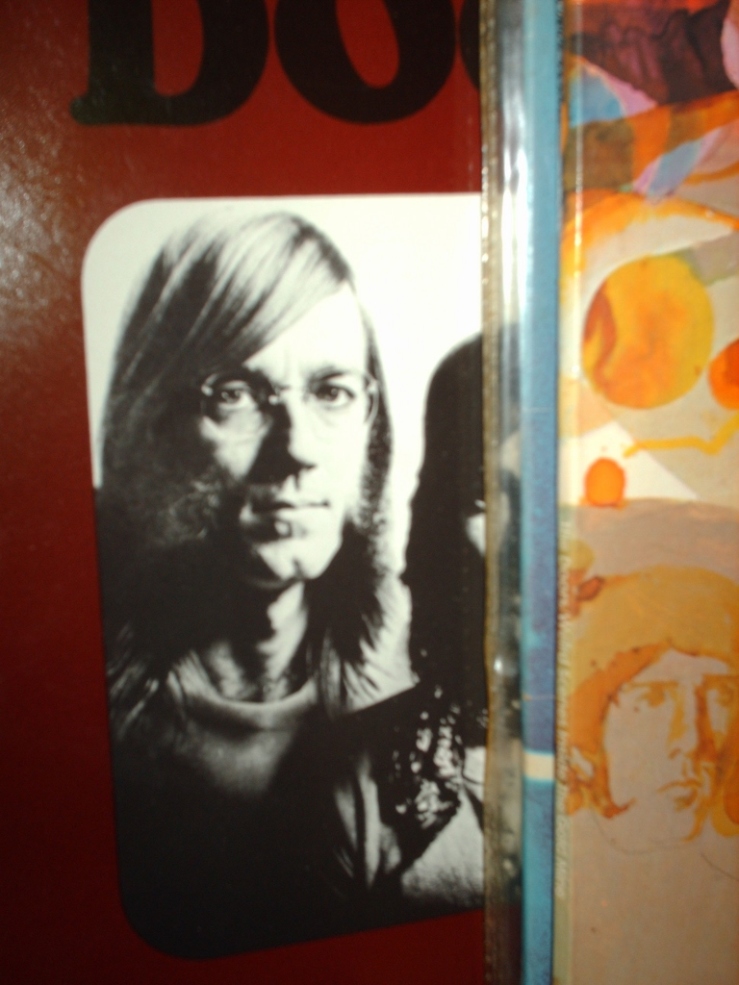
In four intense years, The Doors had produced some of the most esoteric, poetic, dark and, at times, carnivalesque music in the history of rock. Back in January 1967, the band had set out their stall with their debut album, opening with the defining ‘Break On Through (To The Other Side)’, a mantra to the personal philosophy of James Douglas Morrison. The band’s name (and direction) was allegedly inspired by ‘The Doors Of Perception’, an essay by Aldous Huxley, who in turn took this from a line in William Blake’s poem ‘The Marriage Of Heaven And Hell’. A cornucopia of delights, the first album sets poetry to music in beautiful original songs like ‘The Crystal Ship’ and ‘End Of The Night’, juxtaposed with rockers like ‘Twentieth Century Fox’ and ‘I Looked At You’. The band also reinterpret musical history through ‘Alabama Song (Whisky Bar)’, written by Bertolt Brecht and Kurt Weill in 1920s Germany for the play ‘Little Mahagonny’, and ‘Back Door Man’, bluesman Willie Dixon’s paeon to adultery recorded by Howlin’ Wolf in 1961. There is a strong connection between ‘L.A. Woman’ and the debut LP, in that the former was the first time since the latter that the band had included a cover version on a studio album – in this case the blues ‘Crawling King Snake’ recalling ‘Back Door Man’?
Morrison was keen on the imagery of the snake, using it often in his poetry, most famously in the first LP’s closing oedipal opus ‘The End’:
”Ride the snake, to the lake…
The snake is long, seven miles…
Ride the snake…He’s old…and his skin is cold…”
Indeed, the first LP set down a marker for longer pieces as album closers – Like ‘The End’ does on their debut, ‘When The Music’s Over’ ends second album ‘Strange Days’ and ‘The Soft Parade’, their fourth album of the same title. Third LP ‘Waiting For The Sun’ was to feature a lengthy composition entitled ‘Celebration Of The Lizard’, developed as a live experience of theatre and poetry, but this was unfortunately ditched for the recording, ‘Not To Touch The Earth’ the only section salvaged (a version of ‘Celebration’ appeared on the ‘Absolutely Live’ double-live album). Bookending both sides of ‘L.A. Woman’ with the two long songs that effectively define the record works brilliantly…
Ever since the first album, which portrayed Jim Morrison’s face larger than the other three band members, The Doors LP sleeves had shown all four musicians as equal partners: ‘Strange Days’ only on the back as a poster on a wall, ‘Waiting For The Sun’ standing out in a pastoral landscape, ‘The Soft Parade’ in a film/photography studio (?) and ‘Morrison Hotel’ in the window of a bar (roadhouse?). ‘L.A. Woman’ is no exception, depicting the head and shoulders of the four in a black and white group photo. Apparently the band were not happy with compilation ‘13’, released by Elektra prior to ‘L.A. Woman’ because Morrison’s portrait dominates the album sleeve, with the other doors minimised at the foot, harkening back to the first album cover. Morrison also hated the photo used for ‘13’, depicting a much younger, clean-shaven Jim, a persona that he considered he’d outgrown…

So, to the music…
’The Changeling’
Robby Kreiger’s guitar line was allegedly inspired by a James Brown horn section part , a nod to the black American music that influenced the album throughout. The song immediately bursts into action, funky and raw, accompanied by grunts from Morrison until the sparse vocal lines kick in:
”I live uptown
I live downtown
I live all around
I had money
I had none
I had money
I had none
But I never been so broke that I couldn’t leave town
I’m a changeling
See me change…”
It’s a fine, strong start to the record, followed by the more finessed ‘Love Her Madly’:
In his autobiography ‘Riders On The Storm’, John Densmore describes how the song was chosen to be the first single off the album:
”Elektra prez Jac Holzman called a meeting to confer with us on picking a song to be released off what was to become our last album…
”I have a hunch about ‘Love Her Madly’.”
I did too.
”Nah, it’s too commercial,” Robby responded quickly from the corner of the room…”Isn’t that what a single’s supposed to be?” Jac retorted.
”Yeah…well,” Robby said, walking up to the fireplace. “How about ‘Riders’ or ‘Changeling’?”
”’Riders’ is too long, Robby,” Ray chimed in.
Jim seemed ambivalent.
”’Love Her Madly’ is a top-five record,” Jac negotiated. “Let’s go with it, and if we get some action, then we can have a second single. ‘Riders On The Storm’ will get more FM airplay than any record in history. If ‘Love Her Madly’ is a hit first, then we release ‘Riders’…”
Song by song, Jac Holzman predicted exactly what happened. On April 24, 1971, ‘Love Her Madly’ went to number four, and we were back on AM radio, hot and heavy.”
”Don’t you love her madly
Want to be her daddy
Don’t you love her face
Don’t you love her as she’s walking out the door.”
The song title and hook for blues stomp ‘Been Down So Long’ was allegedly taken from Richard Fariña’s 1966 book ‘Been Down So Long It Looks Like Up To Me’, a novel based loosely around Fariña’s college days and travelogue.

The cover of Richard Fariña’s 1966 book ‘Been Down So Long It Looks Like Up To Me’
In ‘Riders On The Storm’, John Densmore describes how he arrived at the drum sound on this song and explained his idea to engineer Bruce Botnick:
”I’ve loosely tuned the toms to the I, IV and V chords because we’re going to work on ‘Been Down So Long’, which is a blues. I didn’t learn to tune the tympani in the high school orchestra for nothing!”
”Great. They sound good.”
‘Cars Hiss by My Window’ is a moody, slow blues:
”The cars hiss by my window, like the waves down on the beach…”, croons Morrison over the pumping, slow bass-driven beat, turning on its head his notion of the city passing by the window of a car, as pictured in this poem from ‘The Lords’:
”…Modern life is a journey by car. The Passengers change terribly in their reeking seats, or roam from car to car, subject to unceasing transformation. Inevitable progress is made toward the beginning (there is no difference in terminals), as we slice through cities, whose ripped backsides present a moving picture of windows, signs, streets, buildings. Sometimes other vessels, closed worlds, vacuums, travel along beside to move ahead or fall utterly behind.”
The poem may have inspired Iggy Pop in his writing of ‘The Passenger’ for his ‘Lust For Life’ album, perhaps stealing ‘The Passengers’ idea and almost certainly the city’s ‘ripped backside’ evocation for another (metaphoric?) car journey…
For the ending, Morrison impersonates a guitar solo (taking it full circle, instruments originally having impersonated the human voice), meowing and improvising his way through the blues…
‘L.A. Woman’, the closing piece on Side One is the heart and soul of the record, an homage to the city that The Doors called home. As soon as the song moves into gear, you can imagine yourself driving down a Californian freeway on a hot night…
Jim was in love with the idea of the city, as evident in this atmospheric poem published in ‘The Lords’:
”We all live in the city
The city forms-often physically, but inevitably psychically-a circle. A Game. A ring of death with sex at its center. Drive toward outskirts of city suburbs. At the edge discover zones of sophisticated vice and boredom, child prostitution. But in the grimy ring immediately surrounding the daylight business district exists the only street life, night life. Diseased specimens in dollar hotels, low boarding houses, bars, pawn shops, burlesques and brothels, in dying arcades which never die, in streets and streets of all-night cinemas.”
Some of these themes are explored in the song:
”Well I just got into town about an hour ago
Took a look around see which way the wind blows
Where the little girls in their Hollywood bungalows
Are you a lucky little lady in the City of Light
Or just another lost angel…City of Night…”
There’s reflection and loneliness as we get deeper into the song, still motoring on:
”I see your hair is burnin’
Hills are filled with fire
If they say I never loved you
You know they are a liar
Drivin’ down your freeways
Midnite alleys roam
Cops in cars, the topless bars
Never saw a woman…
So alone, so alone…”
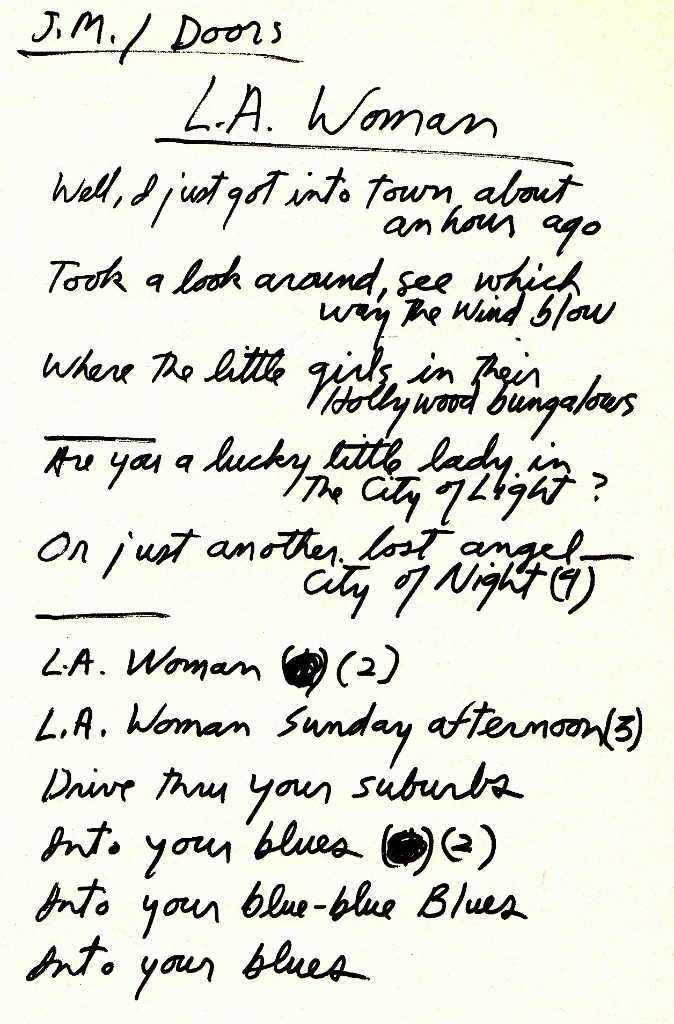
The lyrics to ‘L.A. Woman’, written in Jim’s handwriting
(from ‘No One Here Gets Out Alive’)
The ’Mr Mojo Risin’ in the end section of the song was Jim’s clever anagram of his surname, his blues alter-ego? The part slows the whole thing down then builds and builds to a climax and fade…An amazing song!
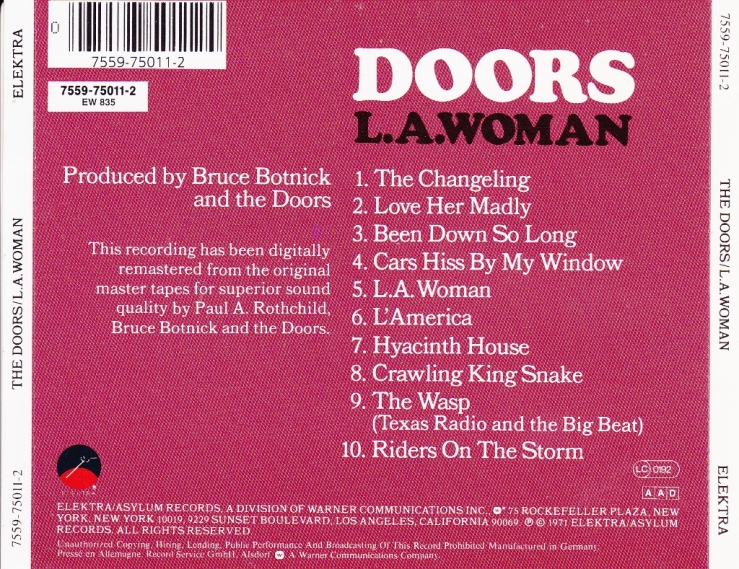
The opening song on Side B, ‘L’America’, was written for the soundtrack of ‘Zabriskie Point’, a film by the famous Italian director Michelangelo Anonioni, although it wasn’t chosen. Jim Morrison wrote the alchemical lyrics with the movie in mind, a story about America set in the sixties. Morrison sings over an almost militaristic beat by Densmore:
”I took a trip down to ‘L’America
To trade some beads for a pint of gold…”
Densmore says that the ‘L’ ‘ is short for ‘Latin America’ and praises Morrison’s poetic prowess on this song, also describing how they played it live for Antonioni, allegedly scaring off the filmmaker with volume and the menacing note-bending riff played by Krieger…
’Lamerica’ is a concept Morrison visited many times in his poetry, as evidenced in these excerpts from ‘Wilderness’:
”LAmerica
Cold treatment of our empress
LAmerica
The Transient Universe
Instart communion and communication.”
a poem titled ’LAMERICA’:
”Trade-routes
guide lines
The Vikings and explorers
Discoverers
The unconscious”
another poem titled ’LAMERICA’:
”clothed in sunlight
restless in wanting
dying of fever”
Evocative stuff, but, unfortunately, none of it used in this song, which is kept spare and economical…Morrison teases us with some humour in the upbeat bridge:
”C’mon people don’t you look so down, you know the rainman’s comin’ to town
He’ll change your weather, change your luck
He’ll even teach you how to f…..find yourself…”
The reference to ‘the rainman’ precedes the comedy road drama starring Dustin Hoffman and there is more precipitation later in the song – “like the gentle rain, like the gentle rain that falls”…’Someday a real rain will come’?
Densmore elaborates on the next song ‘Hyacinth House’ in his book ‘Riders On The Storm’, recalling a conversation with Manzarek while Krieger and Morrison went out to get supplies:
”Do you know what ‘Hyacinth House’ means, Ray?” I asked while Jim was gone.
”Nope, but I see the bathroom is clear.”
”Yeah, that’s a funny line. It’s almost pathetic in its paranoia. I love the feel though…”

In ‘No One Here Gets Out Alive’, Jerry Hopkins and Danny Sugerman’s biography of Jim Morrison, the authors note Manzarek’s wry sense of musical humour:
“After Jim sang an absurd line, ‘I see the bathroom is clear’, Ray slid into the melody line from Chopin known as ‘Til the End of Time’. “
Humour aside, the song appears to have esoteric roots – Densmore describes Edith Hamilton’s book on Greek mythology having ‘illuminated the hyacinth myth’ for him, helping him realise that it was ‘possibly the saddest song’ that Morrison ever wrote. The hyacinth allegedly came into being through the death of a beautiful Peloponnesian youth loved by Apollo, the flower springing from the blood of Hyacinthus, killed when the jealous Zephyrus diverted a discus to hit him. A memorial shrine was erected at Amyclae in Laconia and a three-day festival, the Hyacinthia, was held in his honour at Sparta…
John Lee Hooker first recorded Tony Hollins’ ‘Crawlin’ King Snake’ in Detroit on February 18, 1949, for release by Los Angeles-based Modern Records, The tune has subsequently been a staple in the set of many a blues band and was part of The Doors early repertoire, returning here with an older bluesman and more experienced band stamping their mark on the tune…

‘Snake’ is followed by The Doors’ original classic ‘The WASP (Texas Radio and the Big Beat)’ – Manzarek describes the song’s roots in ‘Break On Through’:
”When Jim was growing up, there was this border radio over in Mexico that would blast out with a huge power signal you could hear after midnight all the way to Florida or to the Midwest, where I was living. Wolfman Jack was on it then and you’d hear this guy with the gravelly voice playing the strangest, weirdest rock’n’roll, stuff you’d never hear on AM studio. To us that’s what Texas radio was – border radio, pirate radio, that dangerous, renegade sound.”
So, ‘WASP’ being the name of the fictional station perhaps? (the four capital letters following the format of US radio names)…Jim Morrison references the song title in this poem, published in ‘Wilderness’:
”…And this morning before I sign
off I would like to tell you
about Texas Radio and the Big Beat
It moves to the perimeter of
your sacred sincere and dedicated
Smile like a calm survivor
of the psychic wars. He was
no general for he was not old.
He was in a private for he
could not be sold.”
Having explored a plethora of concepts and imagery, Morrison incorporated some rich, exotic scenes into the song:
”Some call it heavenly in its brilliance
Others, mean and rueful of the Western dream
I love the friends I have gathered together on this thin raft
We have constructed pyramids in honor of our escaping
This is the land where the Pharaoh died
The Negroes in the forest brightly feathered
They are saying, “Forget the night.
Live with us in forests of azure.
Out here on the perimeter there are no stars
Out here we is stoned – immaculate.”
Rock, poetry and philosophy combine to create perfection for the soul…A hard track to follow, but ‘Riders on the Storm’ does that, ending the album with a beautiful cinematic landscape…The rain falls, there’s a clap of thunder, then THAT brilliant bassline from Scheff in E minor and A major (no credit to him so perhaps originally written by Manzarek’s left hand on piano?), keyboard arpeggios and scales (subject of Rothchild’s ‘cocktail jazz’ accusations), more thunder as the song settles into the verse, Morrison’s enigmatic delivery doubled by a second eerie whisper vocal: ”Riders on the storm”, the call responded to by Krieger’s tremolo guitar riff, with echoes of Sergio Leone spaghetti westerns…
Then the minor/major chord climb-up…
”Into this house we’re born
Into this world we’re thrown”
…and descent…
”Like a dog without a bone, an actor out on loan
Riders on the storm.”
…straight into verse two and Morrison’s warning of a killer on the loose:
”There’s a killer on the road
His brain is squirmin’ like a toad
Take a long holiday
Let your children play
If you give this man a ride
Sweet family will die
Killer on the road, yeah”
Krieger’s dreamy solo leads us through the storm to some advice to women from Mr. Mojo Risin’:
”Girl, you gotta love your man
Girl, you gotta love your man
Take him by the hand
Make him understand
The world on you depends
Our life will never end
Gotta love your man, yeah”
Then it’s time for Manzarek to stretch out over the pulsing rhythm section and Kreiger’s subtle arpeggios, intermittent thunder claps and the ever-falling rain. It feels like a long way from L.A. now, maybe out on the desert highway, and the riders are still out there on the storm…There’s the ghost of Jim Morrison in the distance singing ‘riders on the storm’, then he repeats the line four times, the last four lines he will sing on a Doors album, accompanied by his eerie spirit-whisper:
“Riders on the storm
Riders on the storm
Riders on the storm
Riders on the storm…”
The band carry the music to the end of the seven-minute, nine-second journey, only guitar and keyboard arpeggios left at the end to face the rain and thunder…
That was the end, beautiful friend – After recording his vocals for ‘L.A. Woman’, Jim Morrison was to leave for Paris, France, to join his lover Pamela Susan Courson, never to return (Jim died on 3rd July 1971), leaving his three bandmates to complete the record with Bruce Botnick (‘L.A. Woman’ was released in April 1971) and wonder what might have been. Jim was buried in Père Lachaise Cemetery, the largest cemetery in Paris, and his grave is still a site of pilgrimage for his many fans to this day. Morrison shares Père Lachaise with many creative souls: painters, writers, film directors and musicians amongst them, probably the most famous being English writer Oscar Wilde and French singer Édith Piaf.
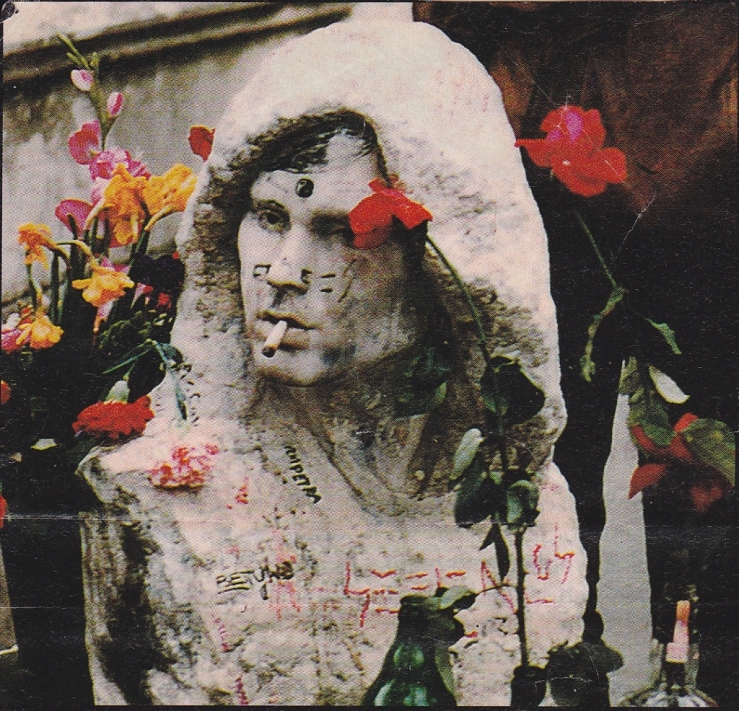
Jim Morrison’s vandalised grave in Paris – the bust was subsequently stolen…
Jim Morrison left behind an impressive body of work, both with The Doors and in his own writings and recordings. A significant selection of his poetry was arranged and put to music posthumously, later released as ‘An American Prayer’. The three remaining Doors went on to write and record two further LPs ‘Other Voices’ and ‘Full Circle’, but these did not come close to the music recorded with Morrison, missing his charismatic vocals and poetic lyrics…In ‘Wilderness – The Lost Writings of Jim Morrison’, Jim describes the appeal of poetry in ‘Self Interview’:
”…and that’s why poetry appeals to me so much – because it’s so eternal. As long as there are people, they can remember words and combinations of words. Nothing else can survive a holocaust but poetry and songs. No one can remember an entire novel. No one can describe a film, a piece of sculpture, a painting, but as long as there are human beings, songs and poetry can continue.
If my poetry aims to achieve anything, it’s to deliver people from the limited ways in which they see and feel.”
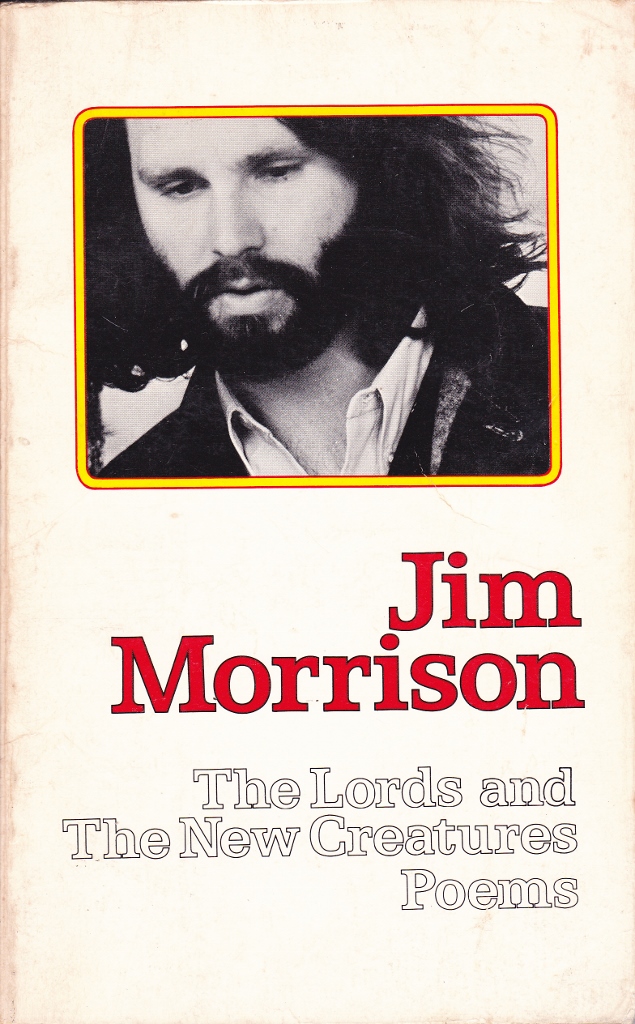
‘L.A. Woman’ – tracklisting:
Side One
The Changeling (Jim Morrison) 4:21
Love Her Madly (Robby Krieger) 3:20
Been Down So Long (Jim Morrison) 4:41
Cars Hiss by My Window (Jim Morrison) 4:12
L.A. Woman (Jim Morrison) 7:49
Side Two
L’America (Jim Morrison) 4:37
Hyacinth House (Ray Manzarek, Jim Morrison) 3:11
Crawling King Snake (Anonymous, arr. John Lee Hooker) 5:00
The WASP (Texas Radio and the Big Beat) (Jim Morrison) 4:16
Riders on the Storm (Jim Morrison, Ray Manzarek, Robby Krieger, John Densmore) 7:09
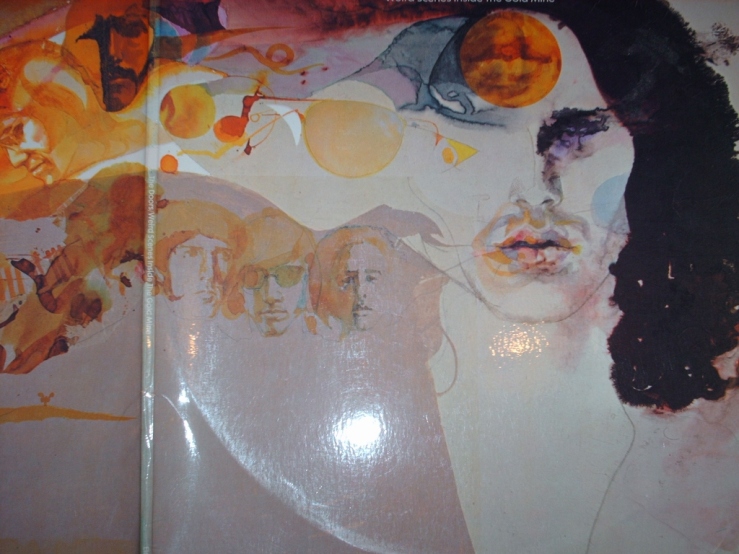
References and quotes:
Densmore, J. (1991). ‘Riders On The Storm – My Life With Jim Morrison And The Doors’. London: Arrow Books Ltd.
Hopkins, J. and Sugerman, D. (1980). ‘No One Here Gets Out Alive’. London: Plexus.
Manzarek, R. (1998). ‘Light My Fire – My Life With The Doors’. London: Arrow Books Ltd.
Morrison, J. (1971). ‘The Lords and The New Creatures – Poems’. New York: Touchstone.
Morrison, J. (1988). ‘Wilderness – The Lost Writings Of Jim Morrison’. London: Viking.
Riordan, J. and Prochnicky, J. (1991). ‘Break On Through – The Life And Death Of Jim Morrison’. London: Plexus.
Lyrics and music:
Ed. Kleiner, A. (1983). ‘The Doors Complete’. Miami: Columbia Pictures Publications.
Photographs:
Album covers – Elektra records
The author’s own collection, unless otherwise captioned.
